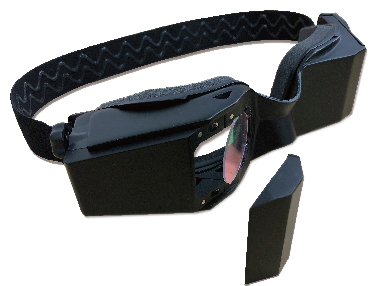
VertiGoggles er et avanceret infrarødt VNG-system til samtidig registrering af øjen- og hovedbevægelser i dagslys og i mørke. Det kan konfigureres i billedhastighed (op til 220 fps) og opløsning (op til Full HD) og er derfor velegnet til udførelse af hovedpulstest og alle VNG-test.
Brillerne er lette og behagelige at have på og tillader optagelse af enten venstre eller højre øje. På grund af det specielle elastiske design er det også velegnet til undersøgelse af børn. Et simpelt magnetisk dæksel tillader undersøgelse i absolut mørke, en indbygget LED kan programmelt tilbyde et fixeringsmål.
Head-Impulse-Test
På grund af den høje billedhastighed, den indbyggede gyrosensor og det lette design er VertiGoggles den ideelle enhed til vHIT.
VertiPACS-Module Calorics – Item Nr. 8210-11
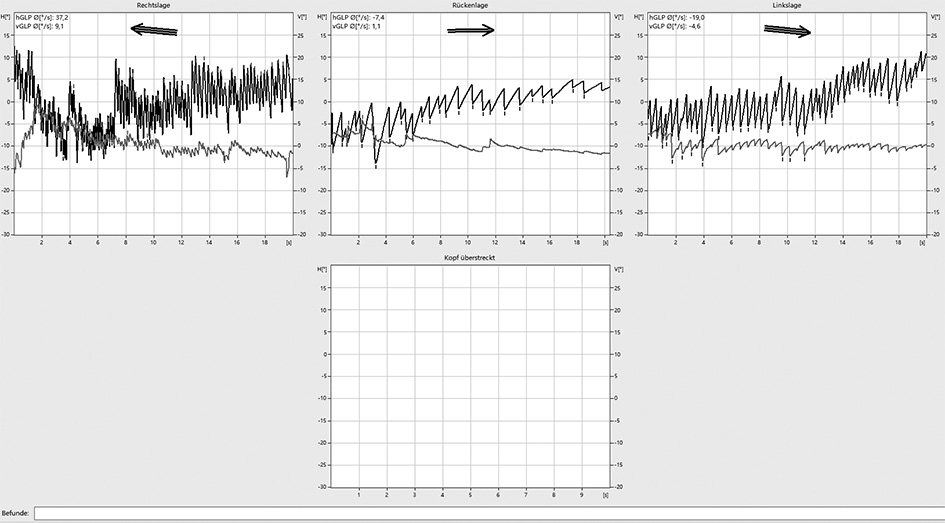
Gaze
This test is performed to document gaze dependent spontaneous nystagmus, au-tomatically calculating its direction and severity.
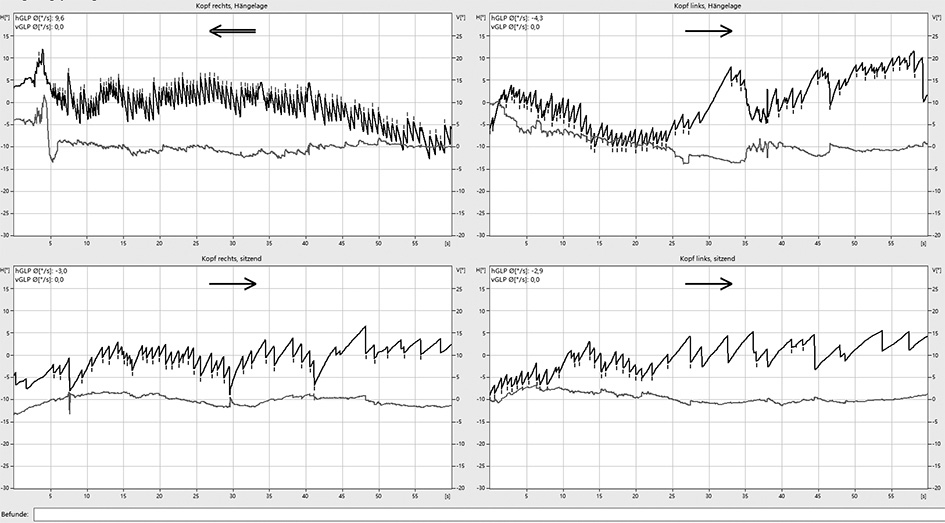
Position test
This test is designed to document posi-tion-dependent nystagmus, which fre-quently presents in patients suffering from atypical BPPV or central nervous system disorders.
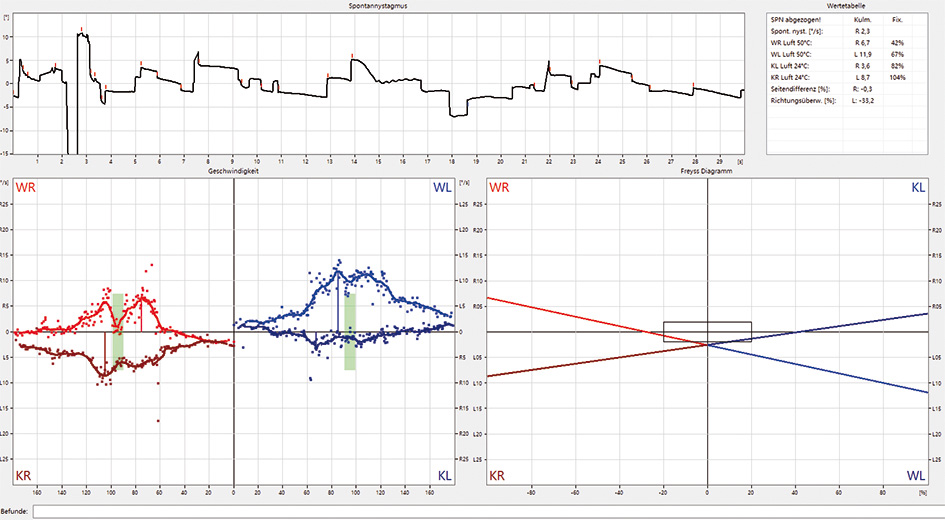
Caloric test
The classic test of the labyrinth. In addition to the analysis of spontaneous nystagmus, the results of the irrigations are displayed in the familiar culmination and Freyss diagrams, thus allowing diag-noses at a glance. The numeric values of Slow Phase Velocity (SPV), Vestibular paresis, Directional Preponderance and the Fixation Index are calculated and shown in a table.
VertiPACS-Module HIMP/SHIMP – Item Nr. 8210-12
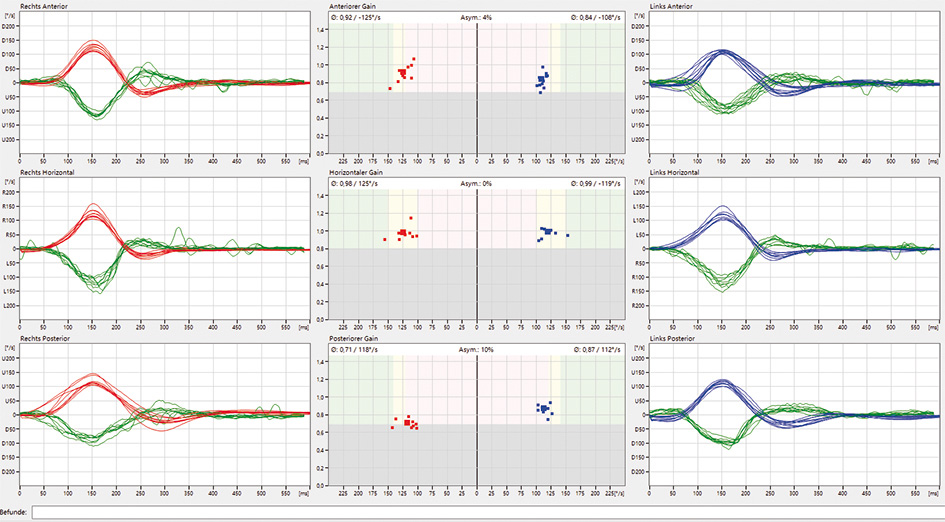
HIMP
The Head Impulse test (HIMP) enables a sidedependent evaluation of all six semi-circular canals. In the test result the head trace can be superimposed on or mir-rored with the eye trace. It is also possi-ble to mirror the diagram for the left ear. The playback function allows simultan-eous playback of the eye video and the head and eye traces in the position and velocity domain.

SHIMP
The SHIMP (Suppression Head Impulse test) is a new variant of the Head Impulse test. It lets you see whether and to what degree any residual function remains on the affected side. The patient‘s task is to stare at a built-in LED which is used as a fixation target during the test to prevent covert saccades (“saccade-killer”). The completely light-proof and magnetically held eye cover facilitates the test.
VertiPACS Add-On Torsion – Item Nr. 8210-16
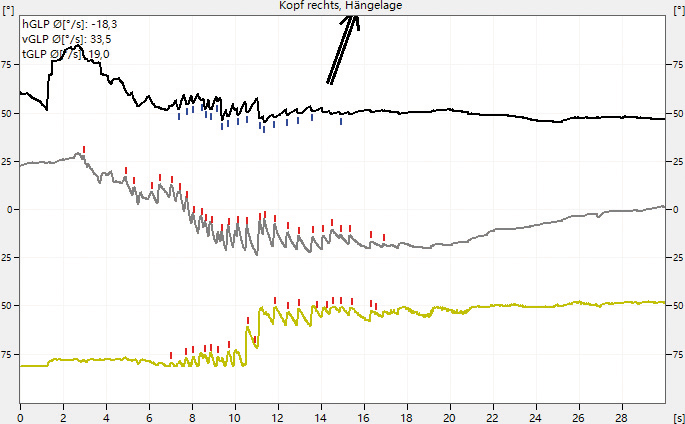
Torsion
The diagnosis of peripheral and central disorders requires a systematic examin-ation of the different types of eye move-ments. For an analysis it is necessary to detect horizontal, vertical as well as tor-sional eye movements.
The detection of torsional eye move-ments is performed in the following tests:
» Gaze Test
» Position Test
» Positioning Test
» Custom Test
VertiPACS Add-On Export
Item Nr. 8210-23
Export
For research and instructional purposes, measured values and videos can be sto-red as separate files on the local hard disk or on an external data storage device:
» Goggles video – Eye video recorded in MP4 format during testing
» Scene video – Room video recorded in MP4 format during testing
» Data – ASCII test results formatted in a CSV file (comma separated values)
The videos are played back with standard media players. Exported measurement data can be used with programs such as Excel or MatLab.
VertiPACS-Module Oculomotor standard Item Nr. 8210-13
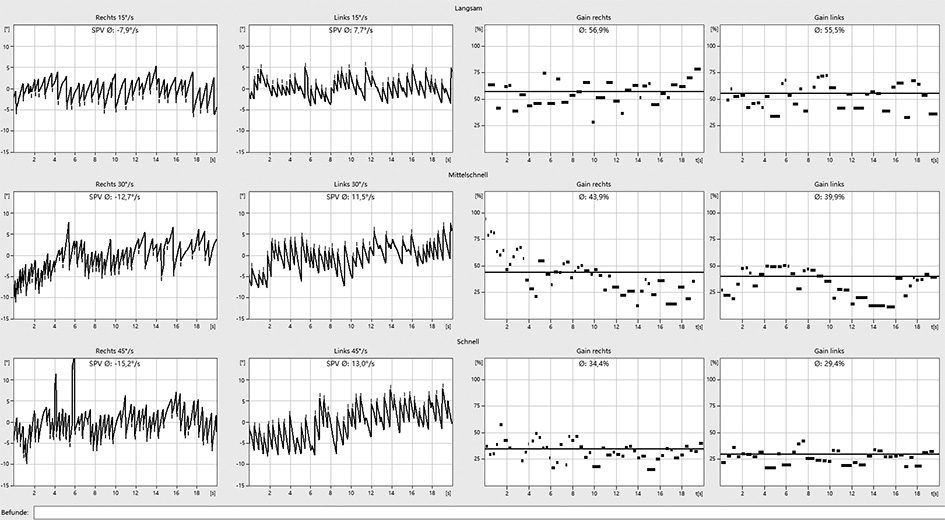
Optokinetic test
Dizziness caused by a malfunctioning of the optokinetic system is indicative of a central nervous system disorder. This test allows an examination of the optokinetic system using various stimuli in the horizontal and vertical planes.

Smooth Pursuit
Disorders of the pursuit system can be detected with this test. It enables an examination of the pursuit system with horizontal and vertical stimuli at four velocities. The horizontal and vertical stimuli have a fixed amplitude of ±15° and ±10°, respectively.
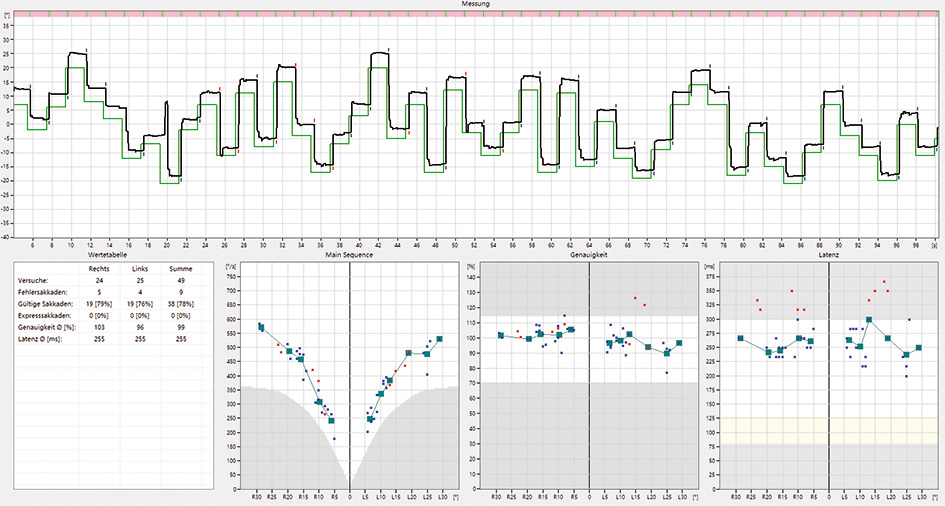
Conventional Saccades
The test allows the assessment of the saccade system via horizontal and vertical stimuli with an amplitude of between ±5° and ±30°. They alternate directions and are equal in number. Speed, precision and latency are assessed, along with the number of trials, error saccades, valid saccades and express saccades.
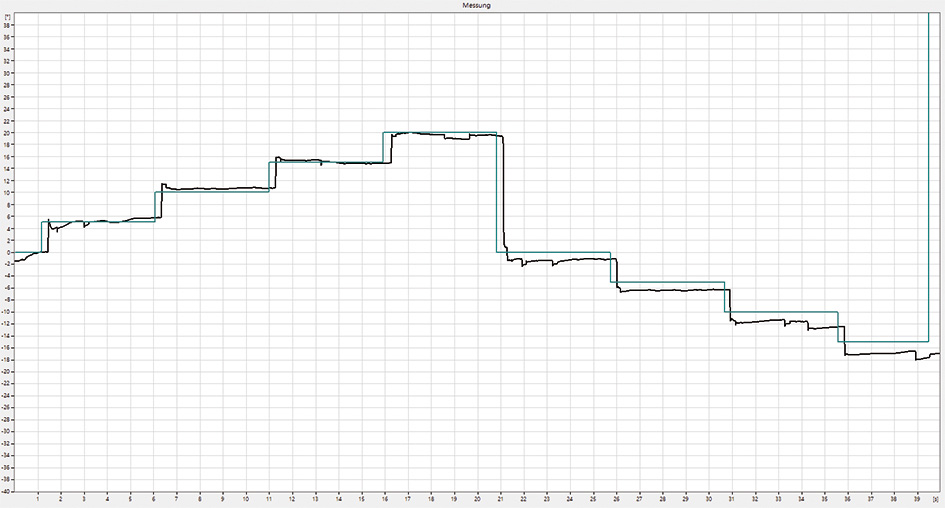
Gaze holding
This test is performed to detect gaze dependent nystagmus. The duration of the measurement, the step duration and step amplitude horizontal and vertical can be set by the user.
VertiPACS-Module Oculomotor advanced Item Nr.8210-14

Predictive pursuit
The patient’s eyes pursue a vertical, sinusoidal gaze target, which is contin-uously presented in a sequence of four frequencies. After each frequency there is a short pause and the gaze target briefly remains in the zero position. The viewer’s anticipation directs the eye in the expected direction and then back again to the gaze target (zero position). The vertical, sinusoidal stimuli have an amplitude of ±10° and are presented in each test run at four velocities, 0.1Hz, 0.3Hz, 0.5Hz and 0.7Hz.
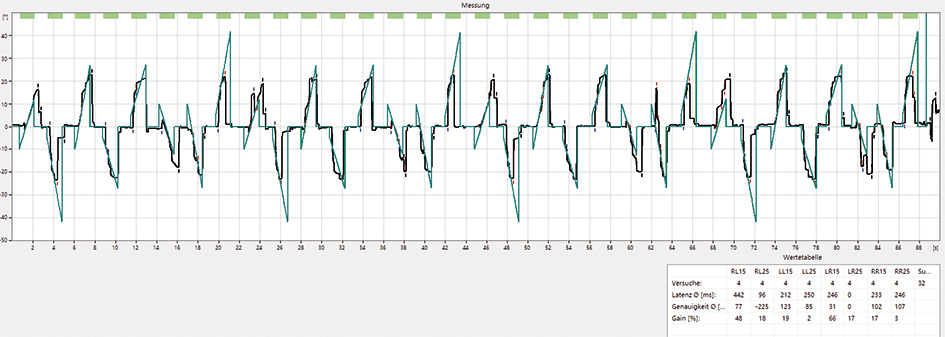
Step-Ramp-Test
Variant of the Smooth Pursuit test in which the initial saccade is suppressed by a short jump of the fixation target. To assess the onset of Smooth Pursuit, unpredictable step ramp stimuli with various jumps and speeds are used. The amplitudes of the jumps vary between ±5° and ±10°, the velocities between 15°/s and 25°/s.
Advanced Saccades allow a detailed assessment of almost every part of the brain and so allow a kind of „brain mapping” with a sensitivity that can, in certain cases, be higher than that of an MRI.
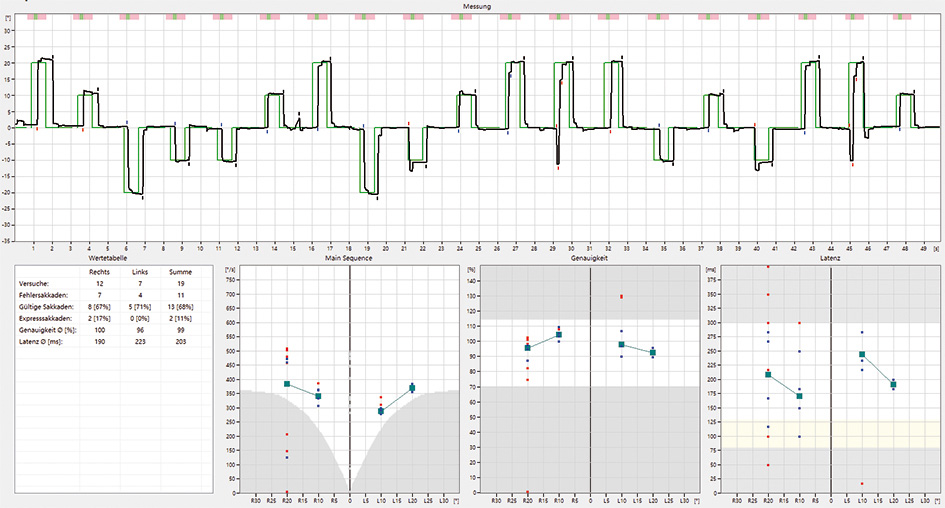
Gap Saccades
A fixation target at the zero position is switched off, after which a new target appears randomly with an amplitude of either ±10° or ±20° in the horizontal direction.
VertiPACS-Module Oculomotor advanced – Continuation
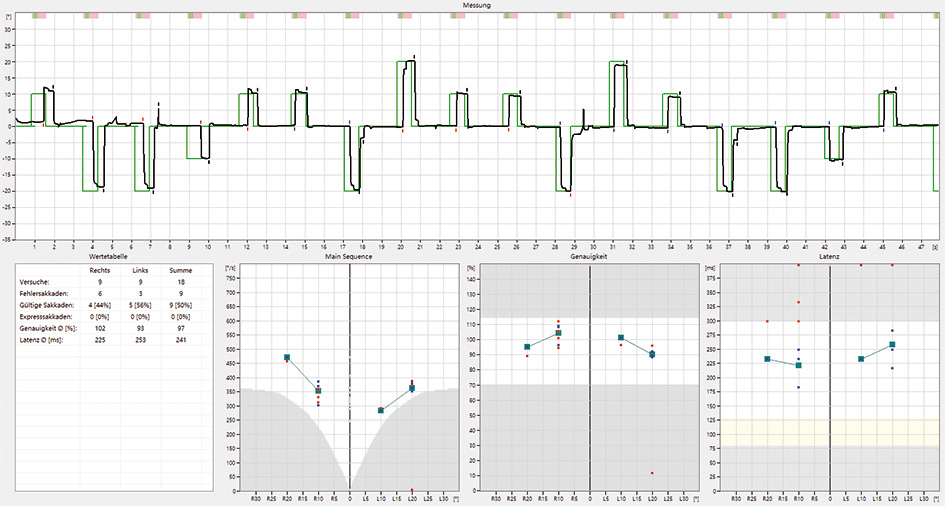
Overlap Saccades
During the presentation of the horizontal gaze target, the fixation target at zero position remains for a short time. The direction of the horizontal gaze target is random, with an amplitude of either ±10° or ±20°.
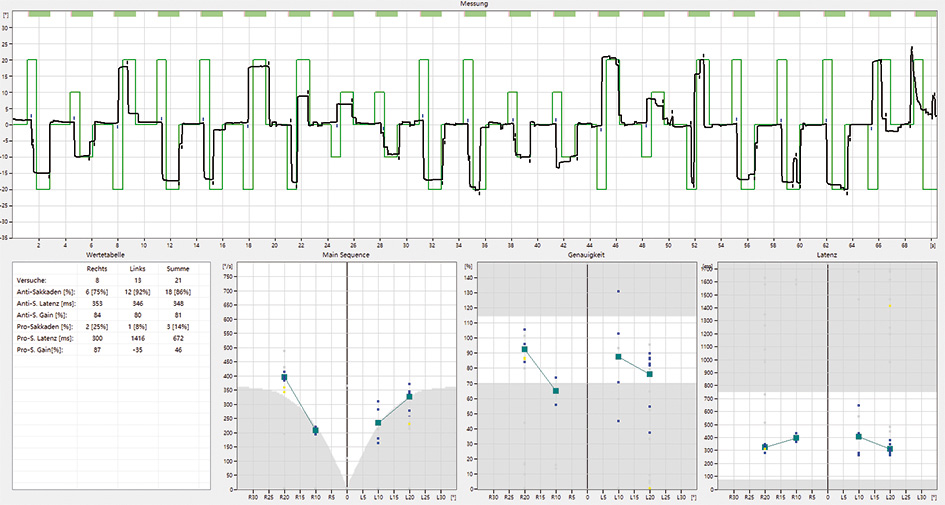
Anti-saccades
This test is used for the separate asses-sment of reflexive saccades (prosacca-des) and voluntary saccades (antisacca-des). When the visual stimulus is presented, the patient is asked to look at a point mirroring the position of the stimulus. The stimulus is horizontal with a random direction and amplitudes of ±10° and ±20°.
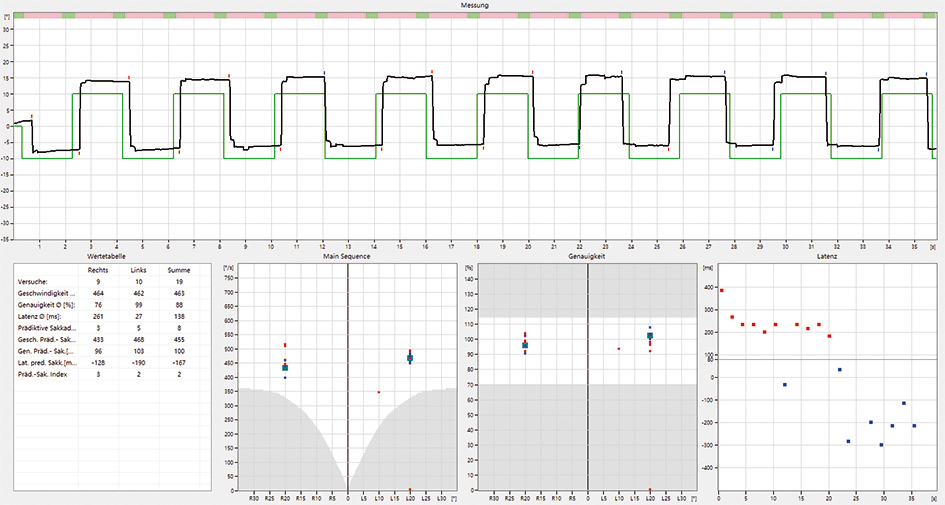
Predictive saccades
This are saccades generated in antici-pation of the appearance of a target at a particular location. In this test, the ampli-tude of the visual target is always ±20°, and the horizontal target jumps in a regular sequence. After a short period of getting used to the stimulus, the patient can perform the saccade even before the new visual target appears, due to the internal image of the saccade (efference copy).
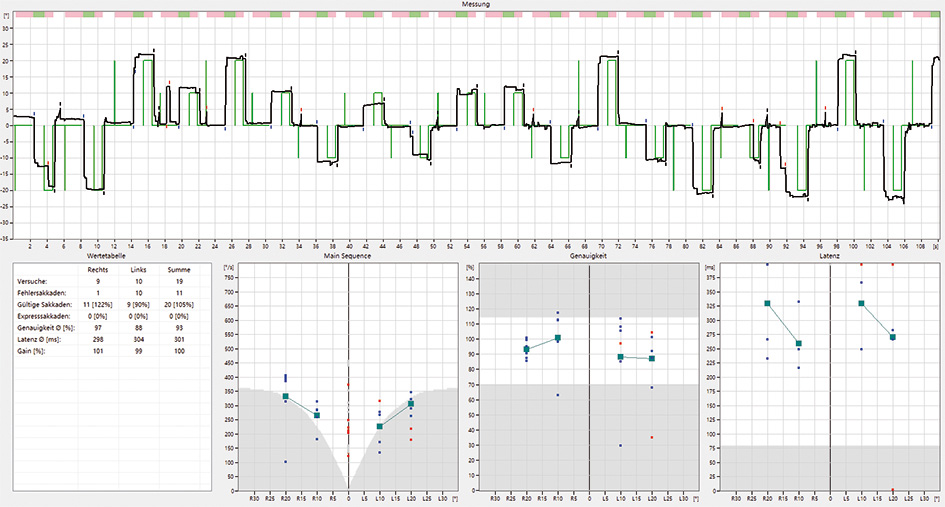
Memory saccades
This test assesses the patient’s ability to generate a saccade to a location in which a target has been previously present. The direction and amplitude of the horizontal stimulus are random. The amplitudes are ±10° and ±20°.